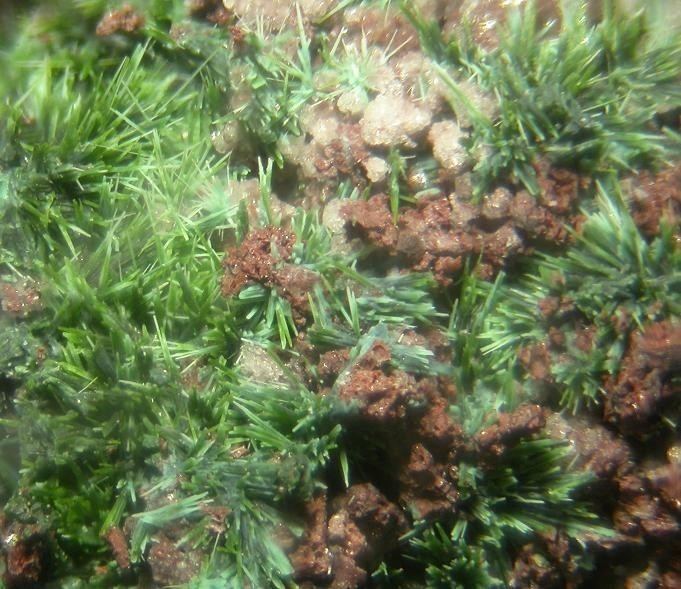Category Sulfate mineral Strunz classification 7.BC.40 Space group I4 | Formula(repeating unit) K2Cu2O(SO4)2 Crystal system Tetragonal | |
 | ||
Crystal class Pyramidal (4)H-M symbol: (4) | ||
Piypite is a rare potassium, copper sulfate mineral with formula: K2Cu2O(SO4)2. It crystallizes in the tetragonal system and occurs as needlelike crystals and masses. Individual crystals are square in cross-section and often hollow. It is emerald green to black in color with a vitreous to greasy luster.
It was first described in 1982 for an occurrence in the Main Fracture of the Tolbachik volcano, Kamchatka Oblast, Russia. It has also been reported from Mount Vesuvius, Italy, and in a slag deposit in the Bad Ems District in the Rhineland-Palatinate, Germany. It occurs as a sublimate phase in a fumarole environment. Associated minerals include halite, sylvite, langbeinite, tenorite, hematite, tolbachite, dolerophanite, urusovite, aphthitalite, ponomarevite, cotunnite, chalcocyanite, sofiite, euchlorine, averievite, fedotovite, alarsite, alumoklyuchevskite, nabokoite and lammerite at the type locality in Kamchatka. On Vesuvius it occurs with paratacamite.
